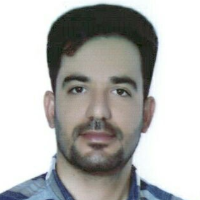Feasibility Study of Achieving the Water Tourism Development in Khuzestān Province (Case Study: Shushtar and Gotvand Hydraulic System)
Tourism is one of the most important factors influencing the economic growth and the development of contemporary societies. It is defined as a tool for stimulating marginal economies, promoting and developing through the creation of employment and income, which has expanded significantly over the past few decades. One of the most attractive branches of the tourism industry that has received more attention in recent years is water tourism. Water tourism, especially when the profitability of other economic sectors is declining, is a suitable alternative and a strategic approach for development. This study aimed to provide macro strategies and identify the potential of hydraulic structures for the development of water tourism. This research was a fundamental study in terms of its objective and a survey in its nature and method. The research population included 376 tourists, experts, and residents (in the study area) selected using a random sampling method. The necessary data were collected through questionnaires, and the output was modeled using the Minitab statistical software and structural equations (EQS). Finally, the proposed strategies were extracted in the form of the SOAR strategic model. The results of the data analysis showed that in the current situation, the greatest feasibility pertained to the economic and managerial-infrastructural indicators. The findings also indicated that the impact of independent variables on the dependent variable can be predicted up to 51%, and the significance between independent and dependent variables is evident up to 95%. Among the components related to the development of water tourism, economic components, with a beta coefficient of 363%, and managerial-infrastructural factors, with a beta coefficient of 206%, have the most significant impact on attracting tourists and developing water tourism in the region. Furthermore, the output of SOAR indicated that the most important executive strategy according to stakeholders and experts was the readiness of citizens to host the tourists, the presence of a tourist attraction spirit, the abundance of tourist-historical facilities, and the commitment and importance placed by relevant managers on developing tourism in the region.
-
Modellin and Measuring the Alienation Feeling in the Ahvaz Urban Space
Maryam Azadbakht *, Saeed Amanpour, Mustafa Mohammadi, Mojtaba Jahanifar
Journal of Social Development, -
Analysis of the physical coherence on the livability of the surrounding spaces of Tehran metropolis, a case study of Pardis city.
Saeed Amanpour *, Mahsa Delfannasab
Journal of Urban Peripheral Development, -
Explanation and impact of poverty on city morphology (Case study: Ahvaz metropolis)
*, Elias Mavedat
Journal of Geography and Regional Future Studies, -
The Feasibility of Realizing the Vision of Agricultural Tourism Development in the Sustainability of Regional Settlements Development A case of Saveh
Majid Goodarzi *, , Hojatullah Pashapur, Mohammad Faraji Darabkhani
Journal of Tourism Space,


